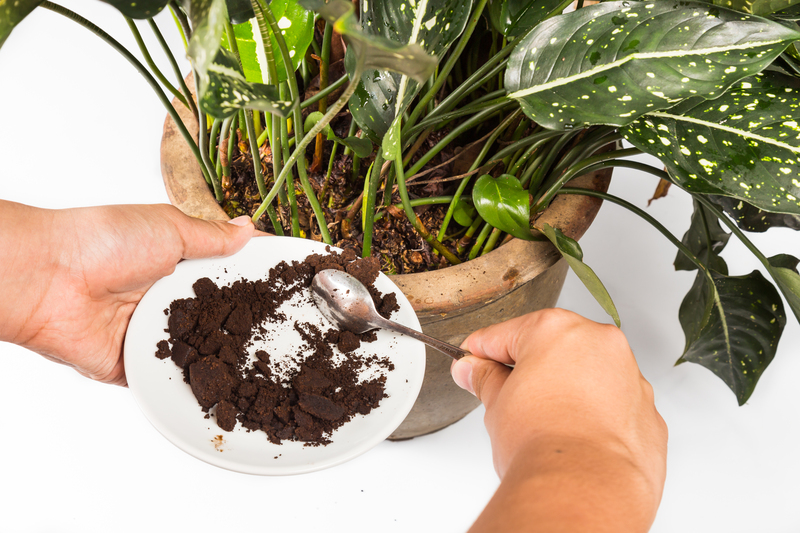Gardening Tips: Shield Your Plants from Overbearing Winds
Posted on 22/06/2025
Gardening Tips: Shield Your Plants from Overbearing Winds
Gardening in areas prone to strong gusts can be a major challenge for plant enthusiasts. Excessive winds not only stress plants but can also cause physical damage, dehydration, and uprooting of even the sturdiest flora. Whether you have a cozy patio garden or a sprawling backyard oasis, safeguarding your green space from blustering winds is crucial for a flourishing garden. In this comprehensive guide, we'll share essential gardening tips on how to shield your plants from overbearing winds and help them thrive, no matter how fierce the weather becomes.
Understanding the Impact of Wind on Your Garden
Before exploring protection methods, it's important to understand how wind affects your plants. Wind can:
- Physically Damage Stems and Leaves: Continuous buffeting can break stems, shred leaves, and bruise delicate flowers.
- Increase Water Stress: Wind speeds up evaporation from both soil and leaf surfaces, leading to rapid dehydration.
- Disturb Pollination: Strong winds can blow away pollinators, disrupt the transfer of pollen, or even cause flower petals to fall off prematurely.
- Uproot Seedlings: Juvenile plants and shallow-rooted species may be outright uprooted in fierce gusts.
Proactive planning is essential to create a wind-friendly gardening environment and protect your beloved plants year-round.
The Signs Your Plants Are Suffering from Wind Stress
- Wilted or scorched foliage despite adequate watering
- Stems bent, broken, or split
- Leaf edges brown and curled
- Loose or exposed roots around newly-planted or shallow-rooted species
- Flowers shriveling or dropping off before pollination completes

Wind Management: Effective Gardening Strategies
Fortunately, you can take concrete steps to shield your plants from excessive winds using a combination of landscape design, natural barriers, and smart gardening techniques. Let's explore each solution in detail.
Create Natural Windbreaks
One of the best gardening tips for windy areas is to establish natural windbreaks. These are rows of trees, shrubs, or tall perennials that intercept and reduce wind velocity before it reaches your vulnerable plants.
- Choose Dense Evergreens: Trees or tall shrubs like yew, thuja, holly, or pine are effective as they offer year-round protection. Plant them in staggered rows for optimum coverage.
- Mix Heights and Species: Blend tall and shorter species for a wind-slowing "edge" that tapers off, rather than creating turbulence with a solid wall.
- Include Hedges and Bushes: Deciduous hedges such as hawthorn, beech, or privet shed some leaves in winter, still offering valuable wind protection.
- Use Ornamental Grasses: Sturdy varieties such as Miscanthus or Panicum form attractive, effective screens that sway gracefully and diffuse wind energy.
Tip: Leave gaps at intervals in your windbreaks to let some airflow through, minimizing turbulent eddies that could harm plants behind solid barriers.
Install Artificial Wind Barriers
Where space is at a premium, or immediate protection is required, artificial windbreaks can shield your plants more quickly than waiting for shrubs and trees to mature.
- Garden Fencing: Semi-permeable fences (wooden slats, trellis panels, woven willow) reduce wind speeds while letting some air pass through.
- Shade Cloth: Install heavy-duty shade cloth or wind netting between fence posts for temporary or seasonal protection of sensitive crops or seedlings.
- Burlap Screens: Burlap attached to stakes provides a budget-friendly, biodegradable wind shield for vulnerable beds or vegetable patches.
- Moveable Partitions: Portable panels or lattice screens can be positioned around planters or containers to safeguard young plants during stormy days.
Always anchor artificial structures securely to withstand gusty conditions!
Choosing Wind-Resistant Plant Varieties
Some plants are naturally adapted to withstand strong winds. When designing a garden in blustery locations, prioritize these ironclad choices:
- Lavender (Lavandula): Low, dense, and highly resilient; perfect for front of borders or exposed spots.
- Boxwood (Buxus sempervirens): Sturdy and compact, boxwood is classic hedge material for windy gardens.
- Sea Buckthorn (Hippophae rhamnoides): Tall, tough, and especially good for coastal or open areas.
- Red Hot Poker (Kniphofia): Ornamental, striking, and remarkably wind and drought resistant.
- Pines & Junipers: Many conifers, like Scots pine and juniper, cope excellently with strong winds.
- Ornamental Grasses: Pennisetum, Miscanthus, Calamagrostis and other grasses thrive where other plants might struggle.
Remember: Grouping wind-tolerant species together in exposed areas not only increases their chances of survival but also forms a shield for more delicate plants nestled further back.
Strategic Garden Layout: Maximize Natural Protection
Effective garden design can go a long way in reducing the effects of overbearing winds. Try these layout tricks:
- Position Fragile Plants Wisely: Place delicate or prized specimens on the leeward side (the side opposite to where the wind blows from) of buildings, sheds or existing plantings.
- Cluster Plantings: Place groups of plants together so they can provide mutual support, reducing wind exposure for each individual plant.
- Use Raised Beds: Elevated beds reduce soil compaction and speed drainage, helping roots withstand wind-induced water loss.
- Terrace Slopes: For sloped gardens, create terraces with retaining walls that double as wind blocks and stabilize soil.
- Garden Arbors & Trellises: Covered archways and tall trellises with climbing plants such as ivy, clematis, or honeysuckle are beautiful as well as functional.
Microclimate Management
Pay attention to the microclimate in your outdoor space. Fences, walls, hedges, trees, and even garden structures can create wind shadows--calmer areas ideal for vulnerable plantings. Move and observe how the wind flows through your yard, and adapt your plant placements accordingly.
Proper Plant Support Techniques for Windy Sites
Even the most wind-resistant plants may need extra support as they establish. Consider these gardening tips:
- Stake Young Trees and Tall Plants: Use flexible ties to loosely secure young trees, tall flowers (like delphiniums or sunflowers), and vegetable stakes. Allow for some movement to encourage strong root and stem development.
- Cage Vulnerable Crops: Tomatoes, peppers, and climbing vines can be secured in sturdy cages to minimize wind-rock and breakage.
- Row Covers/Cloche: Lightweight tunnels or mini-greenhouses not only warm the air but also break the force of wind on tender seedlings.
- Interplant with Groundcovers: Spreading groundcovers like thyme, sedum, or creeping Jenny anchor the soil and create a cushioned micro-habitat.
Watering and Mulching: Combat Wind-Related Dehydration
Gusty winds dry out soils faster than calm conditions. To maintain healthy, hydrated plants:
- Deep-Water Regularly: Irrigate early in the morning to give plants a water reserve through hot, dry afternoons.
- Use Organic Mulch: A thick layer of mulch--like bark chips, straw, or compost--keeps soil moisture in and moderates temperature swings.
- Check Soil Moisture Frequently: Wind can dry out the surface while roots below are still damp. Use a probe or dig down to assess.
- Avoid Wetting Foliage in Midday: Water droplets can act like a lens and intensify sunburn, especially after windy mornings.
Season-Specific Wind Protection Tips
Spring
- Harden off new starts: Gradually introduce seedlings to outside conditions over 7-10 days, starting in sheltered spots.
- Stake early: Train perennials and annuals upright before spring winds arrive.
Summer
- Monitor containers: Potted plants, especially on balconies, can dry and tumble rapidly; use windbreaks and check water daily.
- Harvest prompt: Pick ripe fruits and vegetables quickly; wind can bruise or drop mature produce.
Autumn
- Cut back tall annuals: Remove or support fading annuals to reduce wind-whip damage.
- Rake and mulch: Fallen leaves provide extra protection to roots and soften wind impact on bare beds.
Winter
- Apply windbreak wraps: Protect evergreens and roses with horticultural fleece or burlap wraps ahead of winter gales.
- Inspect for windburn: Check for brown or scorched foliage in mid-winter and prune as needed in spring.

Expert Gardening Tips to Shield Your Plants from Overbearing Winds
- Observe prevailing winds: Use a weather vane or wind flag to map wind direction before planting or erecting windbreaks.
- Layer your defenses: Combine several strategies--hedges, fencing, and plant supports--for all-season wind protection.
- Maintain windbreaks: Prune and strengthen hedges, patch fencing, and replace netting after heavy weather events.
- Experiment with annuals: Use fast-growing annuals as temporary windbreaks while slower shrubs or trees get established.
- Embrace native species: Native plants are best suited to handle your local conditions, including wind.
- Be flexible: Move planters or re-site beds if a chosen spot proves unworkable due to continuous wind exposure.
Conclusion: Cultivate a Resilient, Wind-Smart Garden
With careful planning and these top gardening tips to shield your plants from overbearing winds, you can transform even the breeziest patch of land into a thriving sanctuary. Combine thoughtful plant selection, strategic design, robust support structures, and consistent moisture management for year-round lushness and vitality. By being proactive, attentive, and creative, you'll enjoy a beautiful, productive garden that stands strong no matter what the weather brings.
Happy gardening--may your plants sway joyfully, not suffer, in the face of the wind!

